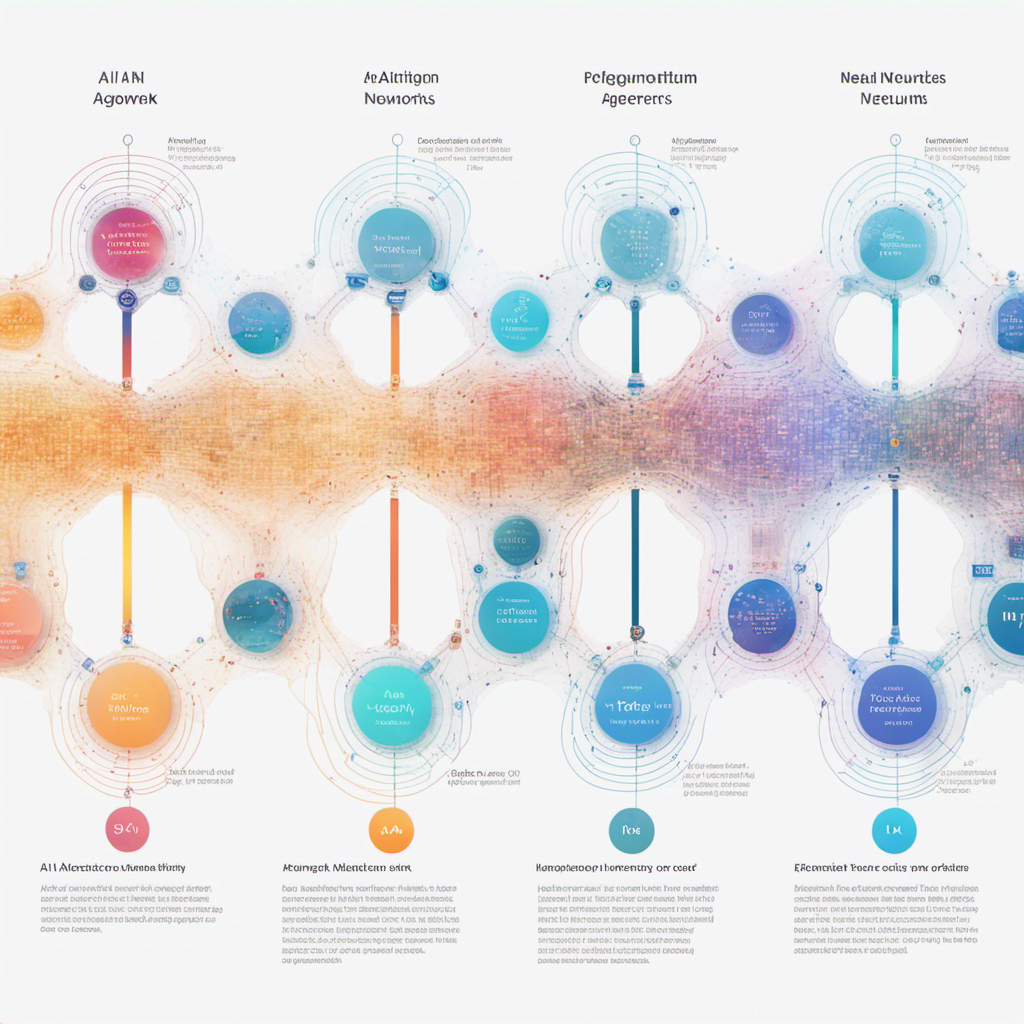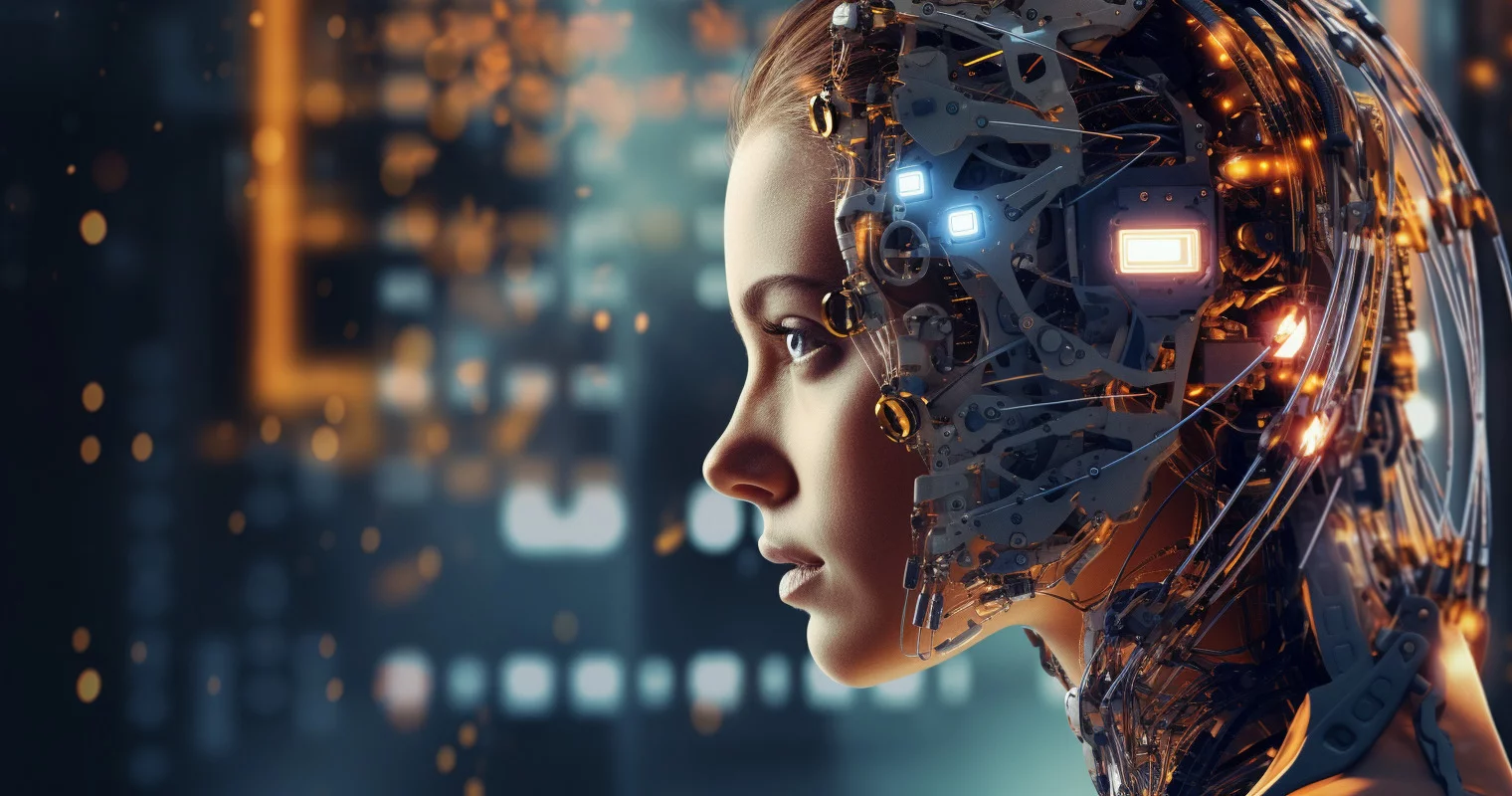The Evolution of AI: Tracing the Journey from Basic Algorithms to Advanced Neural Networks
This section of the article explores the early years of AI and its evolution from basic algorithms to advanced neural networks. It discusses the milestones in AI development, including the shift towards machine learning and the integration of neural networks.
These advancements have revolutionized various industries and have the potential to shape the future of technology. However, there are also challenges to be addressed, such as ethical considerations and potential job displacement.
In the ever-changing landscape of technology and innovation, Artificial Intelligence (AI) has emerged as one of the most transformative and influential fields. From its humble beginnings as basic algorithms to the astounding advancements in neural networks, AI has come a long way in a relatively short period of time. This article delves into the evolution of AI, tracing its journey from its early years to its current state of advanced neural networks.
We will explore the impact of AI advancements and breakthroughs, uncover the influence and applications of AI in various industries, and discuss the prospects and challenges that lie ahead. Join us as we unravel the fascinating story of AI progress, its integration into society, and its potential to shape the future of technology.
1. “The Early Years: Tracing the Origins and Development of Artificial Intelligence”
The Early Years: Tracing the Origins and Development of Artificial Intelligence
Artificial Intelligence (AI) has come a long way since its inception, evolving from basic algorithms to advanced neural networks. The journey of AI can be traced back to the early years when researchers started exploring the possibilities of creating machines that could simulate human intelligence.
In the 1950s, the birth of AI can be attributed to the pioneering work of computer scientists like Alan Turing and John McCarthy. Turing proposed the idea of a universal machine that could mimic any other machine’s behavior, while McCarthy coined the term “artificial intelligence” and organized the Dartmouth Conference, which is considered the birthplace of AI.
During this period, AI was primarily focused on solving problems using rule-based systems and symbolic reasoning. Researchers developed algorithms that could perform logical deductions and manipulate symbols to solve complex problems. These early AI systems laid the foundation for future advancements in the field.
In the 1980s and 1990s, AI witnessed a shift towards machine learning, a subfield that focused on developing algorithms that could learn from data and improve their performance over time. Machine learning algorithms used statistical techniques to extract patterns from data and make predictions or decisions. This marked a significant milestone in AI development, as it paved the way for the integration of AI into various applications and industries

2. “From Algorithms to Neural Networks: Unveiling the Path of AI Evolution”
From Algorithms to Neural Networks: Unveiling the Path of AI Evolution
Artificial Intelligence (AI) has come a long way since its inception. The evolution of AI can be traced from basic algorithms to the development of advanced neural networks, marking a significant shift in the field of technology and innovation.
Initially, AI algorithms were designed to perform specific tasks based on predefined rules and logic. These algorithms utilized a set of inputs and produced an output based on the programmed instructions. While they were effective for solving basic problems, they lacked the ability to learn and adapt from new data.
However, the introduction of machine learning revolutionized the field of AI. Machine learning algorithms enabled computers to learn from data and improve their performance over time. This breakthrough paved the way for the development of neural networks, which mimic the structure and functionality of the human brain.
Neural networks are composed of interconnected nodes, or artificial neurons, that process and transmit information. These networks can learn from large datasets and extract patterns, leading to more accurate predictions and decision-making. Deep learning, a subset of machine learning, further enhanced the capabilities of neural networks by enabling them to learn multiple layers of abstraction.
The integration of neural networks and deep learning has fueled advancements in various AI applications. From image and speech recognition to natural language processing and autonomous vehicles, neural networks have demonstrated

3. “Revolutionizing Technology: The Impact of AI Advancements and Breakthroughs”
Revolutionizing Technology: The Impact of AI Advancements and Breakthroughs
Artificial Intelligence (AI) has come a long way since its inception, evolving from basic algorithms to advanced neural networks. This AI evolution has been driven by continuous research, groundbreaking discoveries, and relentless innovation. The impact of these advancements and breakthroughs has been nothing short of revolutionary, transforming various industries and shaping the future of technology.
One of the key areas where AI has made significant progress is in the field of machine learning. Machine learning algorithms enable AI systems to learn from data and make intelligent decisions without explicit programming.
This breakthrough has paved the way for AI to tackle complex tasks, such as natural language processing, image recognition, and predictive analytics. As a result, AI-powered applications and systems are increasingly being adopted across industries, from healthcare and finance to manufacturing and transportation.
Deep learning, a subset of machine learning, has further propelled the AI revolution. It involves the use of neural networks with multiple layers, mimicking the structure and functionality of the human brain. Deep learning algorithms excel at processing vast amounts of data, enabling AI systems to achieve unprecedented levels of accuracy and performance. This advancement has led to significant improvements in speech recognition, autonomous vehicles, and even drug discovery.
Neural networks, the backbone of deep learning, have undergone remarkable transformations over time
4. “Exploring AI Applications: Uncovering the Influence and Impact of Artificial Intelligence”
Exploring AI Applications: Uncovering the Influence and Impact of Artificial Intelligence
Artificial Intelligence (AI) has come a long way since its inception, evolving from basic algorithms to advanced neural networks. This evolution has been driven by the continuous research, development, and integration of AI technologies. As we trace the journey of AI, it becomes evident that its applications have had a profound influence and impact on various aspects of our lives.
One of the key areas where AI has made significant progress is in machine learning, a subset of AI that focuses on the development of algorithms and techniques that allow computers to learn and make decisions without being explicitly programmed. Machine learning has revolutionized industries such as healthcare, finance, and transportation by enabling the analysis of massive amounts of data to derive valuable insights and drive informed decision-making.
Deep learning, a subfield of machine learning, has further propelled AI advancements. Deep neural networks, inspired by the structure of the human brain, have enabled breakthroughs in image recognition, natural language processing, and speech recognition. This has led to the development of technologies like virtual assistants, self-driving cars, and facial recognition systems, which have transformed our daily lives.
The impact of AI extends beyond individual applications. Its integration into various industries has sparked innovation and transformed traditional business models. Companies are leveraging AI to enhance customer experiences, optimize

5. “The Future of AI: Prospects, Transformations, and Integration into Society”
The Future of AI: Prospects, Transformations, and Integration into Society
As we delve into the evolution of AI, it becomes evident that its future holds immense potential, along with several prospects, transformations, and integration into society. Artificial Intelligence has come a long way from its basic algorithms to the advanced neural networks of today, powered by machine learning and deep learning techniques.
One of the most exciting prospects of AI lies in its ability to revolutionize various industries and sectors. From healthcare and finance to transportation and manufacturing, AI has the potential to optimize processes, enhance efficiency, and drive innovation. With the continuous advancements in AI research and the adoption of cutting-edge technologies, we can expect to witness significant breakthroughs and developments in the coming years.
Moreover, AI’s influence and impact on society are expected to grow exponentially. As AI becomes more integrated into our daily lives, it will transform the way we work, communicate, and interact with technology. From virtual assistants and personalized recommendations to autonomous vehicles and smart homes, AI applications are becoming increasingly prevalent and influential.
However, with such advancements and integration, there are also challenges that need to be addressed. Ethical considerations, privacy concerns, and the potential displacement of jobs are some of the key challenges that come along with the progress of AI. It is crucial for researchers, policymakers, and
Conclusion
the evolution of AI has been a remarkable journey, tracing its origins from basic algorithms to the advanced neural networks we see today. The early years of AI laid the foundation for its development, with researchers and scientists exploring the possibilities of artificial intelligence. From there, AI progressed through the integration of machine learning and deep learning techniques, paving the way for revolutionary advancements in technology.
The impact of AI advancements and breakthroughs cannot be overstated. AI has revolutionized various industries, from healthcare to finance, by offering improved efficiency, accuracy, and decision-making capabilities. Its applications have expanded to include image recognition, natural language processing, and autonomous vehicles, among others. The influence of AI on society is undeniable, and its integration into our daily lives will continue to grow.
Looking to the future, the prospects of AI are both exciting and challenging. As technology continues to advance, AI will play a crucial role in driving innovation and shaping future tech trends. However, there are also concerns regarding AI ethics, privacy, and job displacement. It is essential for experts and researchers to address these challenges and ensure responsible AI development.





